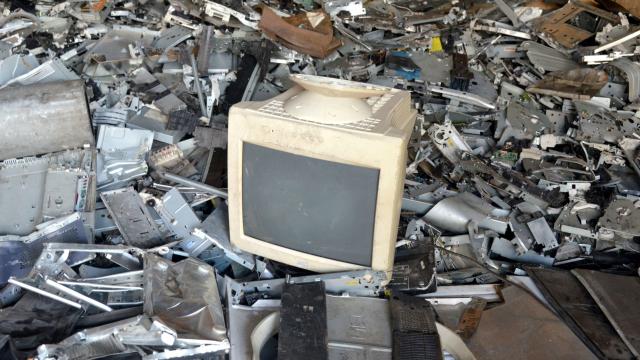The world keeps producing more headphones, microwaves, laptops, air conditioners, and other pieces of electronics even as a record amount ends up as e-waste. A new report concluded that in 2019, humanity generated its highest ever total of e-waste globally, underscoring a rapidly growing problem.
The Global E-Waste Monitor is an effort spearheaded by the United Nations University, International Telecommunication Union, and International Solid Waste Association in collaboration with the World Health Organisation and the UN Environment Program. Released Thursday, the report is the third of its kind ” and the trends it shows are not encouraging. While the world generated 53.6 million metric tons of e-waste ” 9.2 million metric tons higher than what the first report in 2014 documented ” our collection systems haven’t caught up to make sure we dispose of our gadgets properly. This year’s report shows only 17.4% of it was recycled.
“The most surprising fact for me was that the formal collection and recycling rates did not increase that much as I was expecting,” lead author Vanessa Forti, a program associate at the United Nations University, told Gizmodo. “I was expecting that we could do much better in terms of recycling.”
This is extremely concerning because if these electronics aren’t being collected and recycled, they’re likely polluting in some way. Every single piece of electronics contains materials that are both valuable and toxic, including iron, copper, gold, as well as mercury and flame retardants. What’s more, items like refrigerators and air conditioners often contain chlorofluorocarbons and hydrochlorofluorocarbons, potent greenhouse gases that can exacerbate the climate crisis. The authors of the report estimate that 8% of e-waste is discarded into waste bins where it eventually makes its way into landfills or incinerators, largely in high-income countries like the U.S.
In the Global South, where many countries don’t have formal policies to regulate the electronics disposal, e-waste may be mismanaged through informal systems where individuals try to break down the equipment themselves or sell to recyclers who don’t dispose of them properly. As a result, many of the toxic chemicals hidden inside can pollute local soils and waterways.
The report’s authors highlight the threat to public health, especially of children and workers. “Children live, work, and play in informal e-waste recycling sites,” the report says. They may inhale toxic fumes released when electronics are burned or suffer skin contact with the dangerous chemicals that may be leaching out of e-waste and into the dirt they’re trotting over. Workers may also dump the acids used to remove gold from electronics and other substances into nearby waterways, which can spread into the local food system.
This report shows that the situation isn’t improving. Around the world, more and more households are gaining access to basic kitchen appliances and mobile phones. Air conditioner e-waste is measurably increasing, and the use of air conditioning is only expected to rise due to global warming. That’s important to improve people’s quality of life and public health, but absent a strong disposal and recycling program, it could end up contributing to pollution in other ways.
There’s not a strong coordinated effort to figure out what to do when the life cycle of our electronics ends. Only 78 countries have some type of policy, regulation, and legislation to deal with e-waste. Most are in Europe, which has the highest recycling and collection rate. Addressing this will require a concerted effort on behalf of regulators, manufacturers, and consumers. The report itself paints an incomplete picture, with many countries failing to even report how they deal with it e-waste in the first place.
“There’s no easy way forward, especially because e-waste is a complex waste stream,” Forti said.
The amount of e-waste we create globally will only continue to rise. The report estimates the world will produce 74.7 million metric tons of e-waste annually by 2030. Consumers can make changes in their own lives by recycling their electronics and demanding more local e-waste recycling programs in places where they don’t exist. But it’s even more critical for world leaders to figure out how to deal with discarded electronics before they overrun the planet.
Updated: 7/3/2020, 2:57 a.m. AEST: This post has been updated to include the name of other groups involved in the report’s publication.
